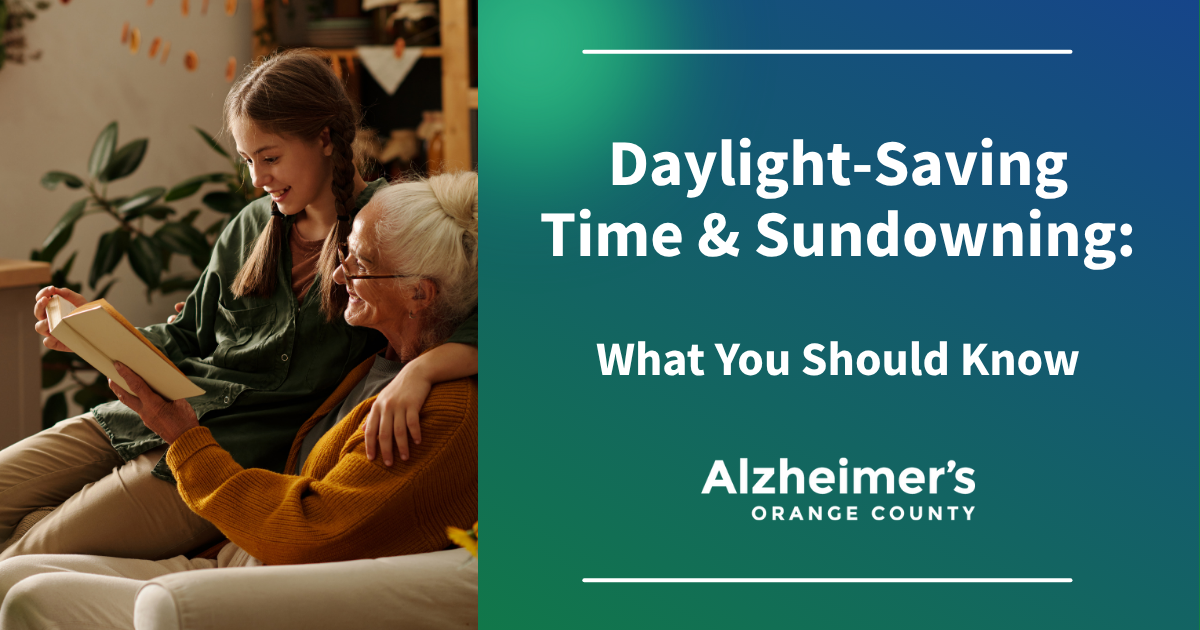As we set our clocks back on November 2, it’s important to be aware of how Daylight Saving Time can impact those living with Alzheimer’s disease or other dementias—especially when it comes to sundowning.
What Is Sundowning and why does it happen?
Sundowning is a term used to describe a group of symptoms—such as increased confusion, agitation, or restlessness—that tend to worsen in the late afternoon or evening. Shifts in time, like today’s, can throw off the body’s internal clock and disrupt established routines, intensifying these symptoms. Changes in natural light and daily structure can also interfere with the brain’s circadian rhythm, often leading to heightened anxiety or noticeable behavioral changes as daylight fades.
Some Tips to Help Manage Sundowning During Daylight Saving Time:
- Keep a consistent daily schedule
- Avoid loud or confusing noises
- Maximize exposure to daylight earlier in the day
- Use soft lighting indoors as the sun sets and in the evening
- Avoid caffeine and large meals late in the day
- Create a calm, quiet environment
- Reassure with a calm and soothing voice
Caregivers: You’re not alone. If you need support, call our helpline at (844) 373-4400.
Additional Reading
Tips for Coping with Sundowning
Discover additional tips and insights about sundowning in this caregiver topic sheet. Download here.
Sundowning Syndrome in Persons with Dementia Webinar
Learn about the behaviors associated with this syndrome, along with the risk factors, triggers and treatment options plus strategies for minimizing and preventing behaviors associated with this syndrome. Watch webinar.
Helpline
Get additional, personal support from our team to help you find answers and resources so you can the support you need. Contact us.


